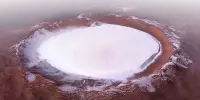NGC 7686 is an open cluster in the constellation Andromeda that contains roughly 80 stars. It is an open star cluster in the Andromeda constellation. It is a good target for binoculars and small telescopes, with a magnitude of 5.6. It is a faint and faraway object in the night sky that is less well-known than certain other celestial objects.
NGC is an abbreviation for “New General Catalog,” which is a catalog of celestial objects compiled by John Louis Emil Dreyer in 1888. This database contains a wide variety of astronomical objects, including galaxies, star clusters, and nebulae. The color-magnitude diagram, according to Johnson et al. (1961), “shows merely a uniform scatter with no significant tendency to show a cluster main sequence.” They conclude that this is not actually a star cluster.
Here are some key details about NGC 7686:
- Location: It is located in the constellation Andromeda, which is prominent in the northern hemisphere. It is not far from the Andromeda Galaxy (M31).
- Size and Brightness: The size and brightness of this open cluster are both moderate. It is made up of several dozen stars and can be seen under dark skies with a modest telescope or even binoculars.
- Stellar Composition: The stars in NGC 7686 are mostly young and hot, having a blue-white coloration. The age of the cluster is estimated to be roughly 100 million years, which is very young in cosmic terms.
- Visibility: Because it can be seen from the northern hemisphere, amateur astronomers and stargazers can observe it. It can be found with the use of star charts or astronomy apps.
NGC 7686 is categorized as an open star cluster, which implies it is a collection of stars that arose from the same molecular cloud and are held together by gravity. These clusters might have anywhere from a few dozen to thousands of stars. Astronomers are drawn to open clusters like NGC 7686 because they shed light on the birth and evolution of stars.
NGC 7686 cannot be seen with the naked eye, thus you will need a telescope to observe it. Its precise locations in the sky can be discovered in astronomical catalogs and star maps to assist you in locating it.
















